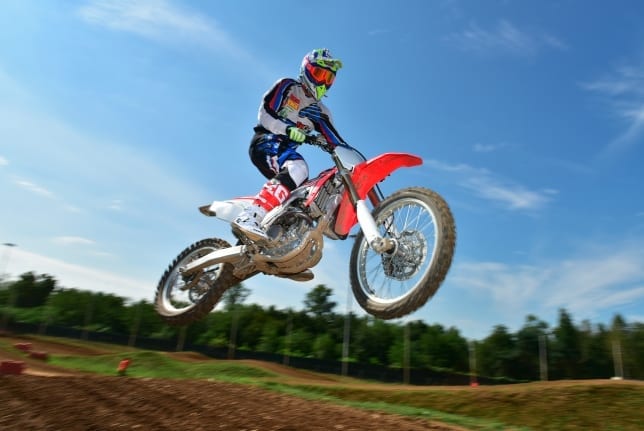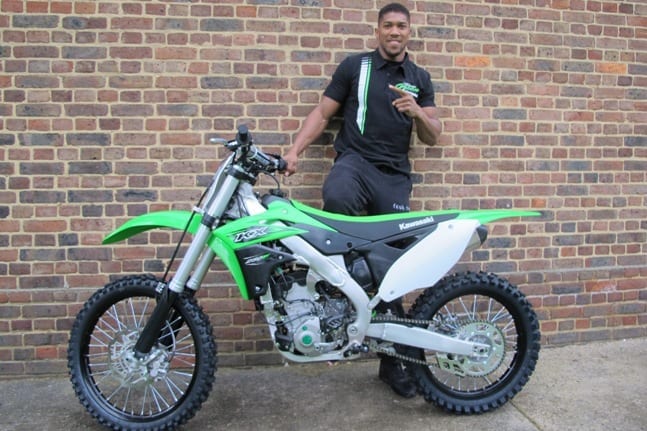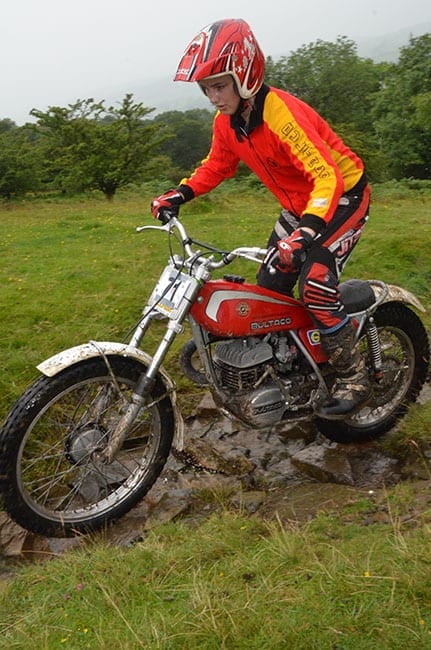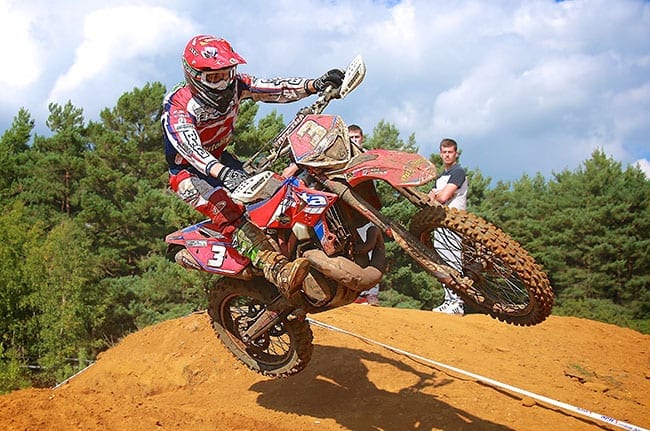ON TEST: Four-midable
By Martin Craven on 23rd Sep 15

OUR long-time bike tester MARTIN CRAVEN recently enjoyed Hondas hospitality to attend the European launch of the 2016 model Honda CRF250R and CRF450R model on the hard-pack track at Malpensa in Italy. Here are his findings...
CRF450R
It's pretty hard to believe that it's a full 13 years since the original Honda CRF450R was launched to the public and 11 years since we first got our hands on its baby brother – the CRF250R.
In essence not much has changed since then although in real terms the technology involved has progressed massively.
The CRF450R has always been one hell of a machine that seemed to bring the best out of everyone from absolute amateurs through to top pro racers.
It has proven itself time and time again with its build quality, reliability and performance all ticking the boxes.
In recent years this model has evolved with help from the HRC race team and the 2015 model was considered to be as close to a factory MXGP class racer as Joe Public could buy.
It actually proved to be so popular that Honda claim that it sold out completely across Europe.
The 2016 model gets minimal changes, with the focus being on suspension tweaks and geometry changes – again based on input from the factory team and its riders Evgeny Bobryshev and Gautier Paulin.
The 48mm KYB Pneumatic Spring Forks (PSF2) are now 5mm longer – although the travel remains the same.
The outer tubes are more rigid and the compression and rebound settings have been firmed up.
This is balanced out by new shock settings out back along with a new ratio for the Pro-Link system. The longer forks and new linkage – taken from the CRF250R – change the steering geometry slightly with more rake and trail.
This makes the wheelbase 2mm longer and lifts the whole bike by 2mm also which means those of you with a sensitive backside might notice that the seat is now higher.
As an added bonus there's also more ground clearance.
The 2016 CRF450R uses the same specification motor as this year. Subtle changes to the power plant include new gears that are ten percent stronger.
One big bonus for the CRF450R is the inclusion of three different map settings that allow you to change power delivery which can be switched on the fly thanks to the handlebar button that confirms the selection back to the rider by a flashing LED.
Mode 1 is the stock setting while Mode 2 is designed for use in slippery conditions when grip is minimal.
At the other end of the scale Mode 3 is very aggressive and responsive and would be ideal for powering through deep sand.
New footpegs, a lighter drive chain (no doubt you'll want to swap that for a heavy duty item fairly quickly) and a smaller diameter chain roller are the only other real technical changes.
Despite there being so few changes out on the track the bike actually feels faster than the 2015 model.
I put this down to the geometry changes increasing traction at the rear wheel. The back feels very planted and there's a lot of rear wheel grip.
The motor might not feel as fast as the KX450F or new KTM but that's not always a bad thing.
Quite often rideability is more important than outright power and the new CRF450R is definitely very rideable – more so than ever before – which makes me think that lap times will be lower.
Throttle response is impressive and there's a good amount of smooth roll-on power that seems to pull linearly through the range with no flat spots or sudden hits of power. Flicking through the different maps I found Mode 1 to be the best on this particular test track, although at home at FatCat I'd probably use Mode 3 most frequently.
The middle mode works well on slick off-cambers when there's little-to-no grip but generally makes the bike feel a little lazy and lethargic.
FOR FULL TEST AND PICTURES SEE TMX NEWS SEPTEMBER 25 (2015)


